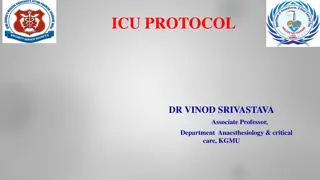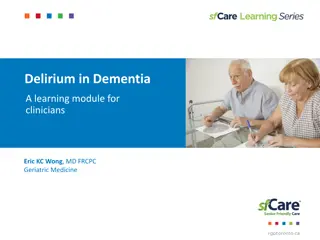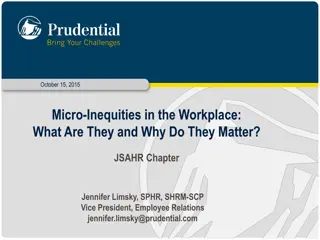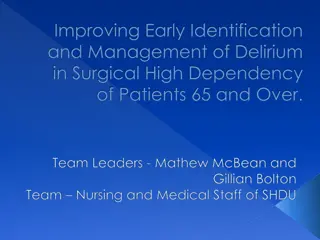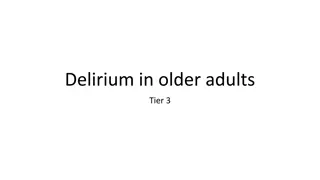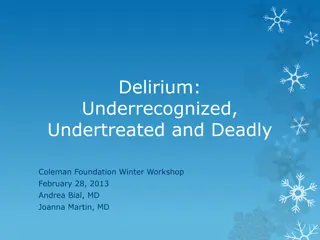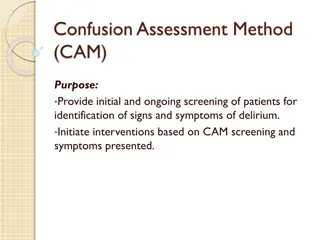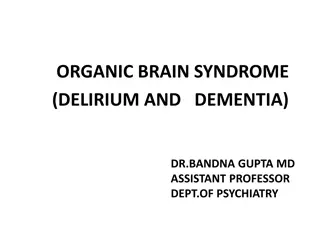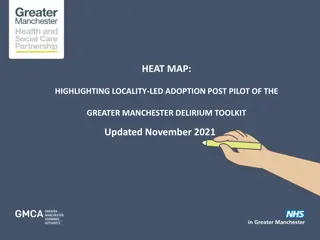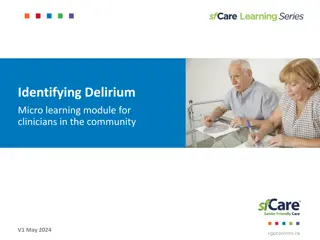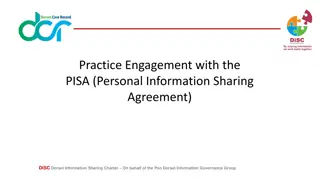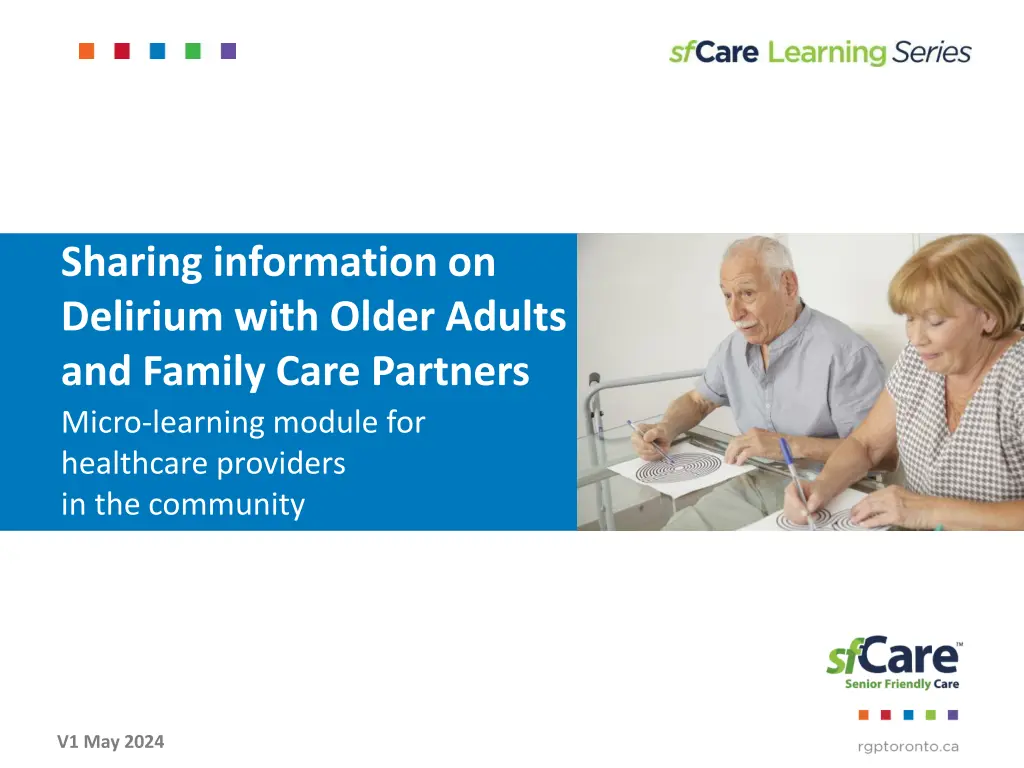
Informing About Delirium to Older Adults & Care Partners
Learn how to effectively share information on delirium with older adults and family care partners to ensure prompt recognition and appropriate care. Discover risk factors, identification techniques, support strategies, and valuable resources for managing delirium in the community setting.
Download Presentation

Please find below an Image/Link to download the presentation.
The content on the website is provided AS IS for your information and personal use only. It may not be sold, licensed, or shared on other websites without obtaining consent from the author. If you encounter any issues during the download, it is possible that the publisher has removed the file from their server.
You are allowed to download the files provided on this website for personal or commercial use, subject to the condition that they are used lawfully. All files are the property of their respective owners.
The content on the website is provided AS IS for your information and personal use only. It may not be sold, licensed, or shared on other websites without obtaining consent from the author.
E N D
Presentation Transcript
Sharing information on Delirium with Older Adults and Family Care Partners Micro learning module for clinicians in the community Micro-learning module for healthcare providers in the community V1 May 2024
Recap: Delirium Care Delirium requires prompt medical attention! Know who s at risk. Older adults, especially those who are 85+; have dementia; have experienced delirium before; or who have recently been hospitalized. Be alert to sudden changes in memory, thinking and behaviour. Symptoms can come and go throughout the day. ? ? Identify delirium by asking Do you feel that [person s name] has been more confused lately? Provide support forsomeone with delirium or at risk: meet basic needs (eating, drinking, sleeping, toileting, moving, seeing and hearing, controlling pain, and stimulating the mind). 2
Information to share What delirium is, and that it requires prompt medical attention Who is at risk and ways to prevent delirium How to identify delirium Who to contact (24/7) to report symptoms Strategies to manage delirium (including distressing symptoms) The expected course and potential consequences of delirium A description of people s experiences of delirium Where to find information, services or support 3
How to share information Provide written information and have conversations with older adults and family care partners to ensure the information is understood and meets their needs. Use plain language (written and verbal) Use visual tools Meet cultural, cognitive, and language needs 4
Examples of resources to share Delirium: Know, Do, Tell, Ask handout can be used as a quick reference for what to watch for, and what to do Changes in Thinking and Behaviour: Delirium and Delirium Prevention and Care with Older Adults are booklets that provide information on all of the topics 211ontario.ca and health811.ontario.ca quickly and confidentially connect people to social or health services and community programs across the province 24/7 Delirium Detection Questionnaire can help family care partners communicate what they are seeing to a doctor or nurse 5
Discussion Take a moment to think about how you might share information with older adults and family caregivers. 6


